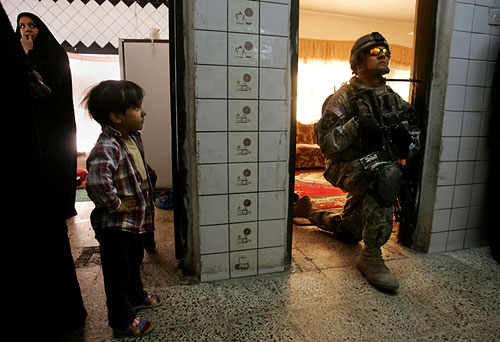 Badnor Village (Rajasthan)- Image Copyright Tewfic El-Sawy
Badnor Village (Rajasthan)- Image Copyright Tewfic El-SawyI travel to many countries around the world which gives me the opportunity to photograph people of different and varying cultural backgrounds, but I've always grappled with the problem of how best to approach and photograph people to show the essence of their personality, without being intrusive and rude.
When I started off photography, I relied on a long lens such as the Canon 70-200mm almost exclusively. It gave me the ability of photographing people from a comfortable distance, and I could sneak off a few shots before being 'discovered'. I no longer use this technique as it isolates me from my subjects, removing any intimacy from the final photograph.
Some people don't seem to have any problems in invading personal spaces. In Bhutan recently, I saw tourists walk up to a monk in a monastery or to a farmer in his field, stick a camera in their face, looking down at the LCD to make sure they got the shot and scoot off without a word of thanks.
I now use short lenses such as the 28-70mm, or the 16-35mm, any of which I have on all the time on my camera. I approach people I wish to photograph openly and just ask permission to do so, using sign language if I have to. If it's a static situation, I always take the time to show them their pictures in the LCD, and even ask them to change the pose if I feel another is needed. I flatter the people I want to photograph, and that removes any inhibition they may have. If my objective is to photograph women, I start photographing their children if any are available, and I show them the pictures. Invariably, the women will accept to be photographed...their husbands may grumble but as I include them in the picture-taking, they relent.
Now, in certain cultures such as in the Middle East and other Muslim countries, this approach would get me into trouble. I got into such trouble in the souk of Marrakech while using my long lens, photographing an elderly man on the sly. Someone noticed what I was doing and tipped him off. The result was not pleasant. Another unpleasant experience was in a Sufi shrine in India, where I was photographing a woman in the throes of a trance at close quarters. She suddenly snapped out of it and grabbed a rock to throw at me. Needless to say, I left in a hurry and she missed.
The other tricky issue relates to whether a travel photographer should pay to photograph someone. I generally avoid doing that, and often refrain from photographing if asked for money. Some people advocate buying something from vendors (when they are the subject of the photographs), but I prefer promising 6x4 copies of the photographs...and I keep my word! In the event that my subjects are musicians or dancers, then I gladly tip them for sharing their art...but not for the photographs. A distinction which I make clear to them.
Finally, I always try to learn a few words in the local language...and thanking people in their own langugae is always appreciated...and gets you laughs.















